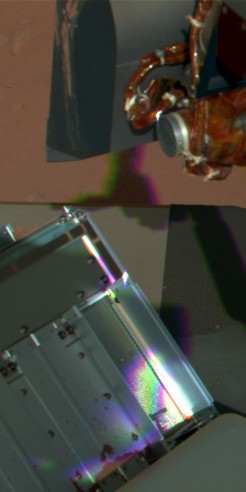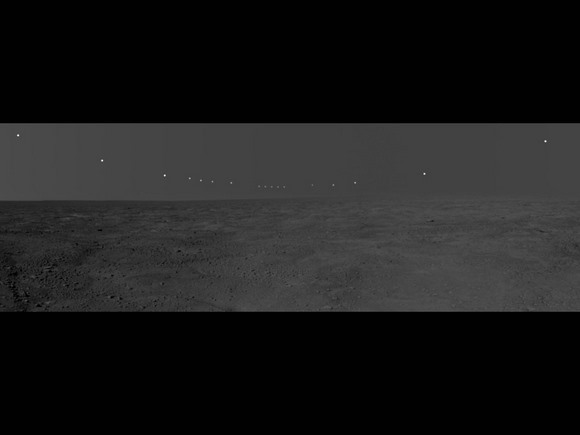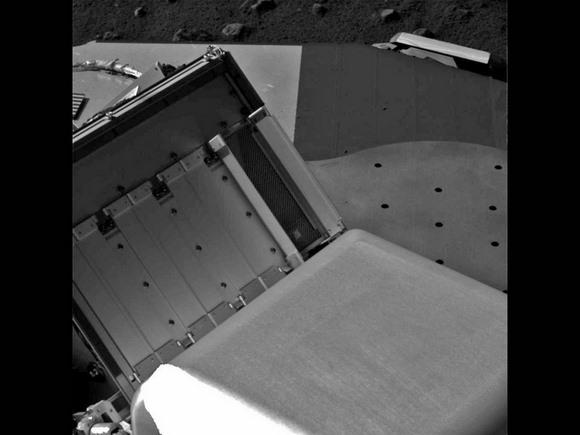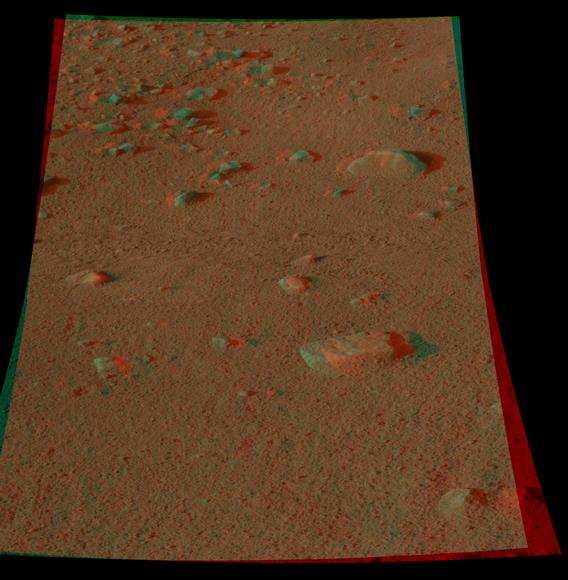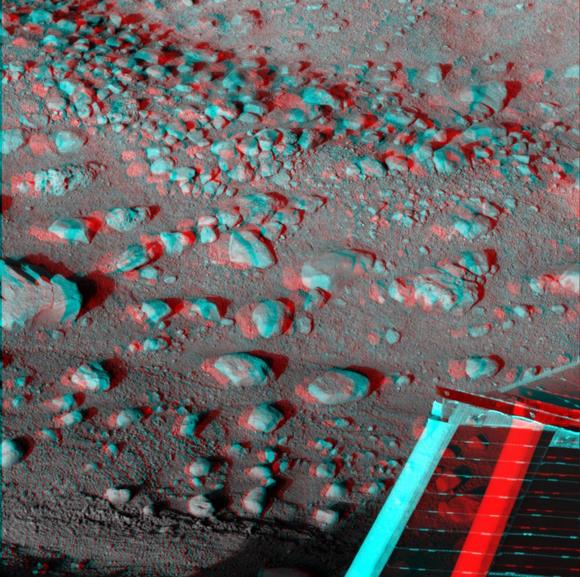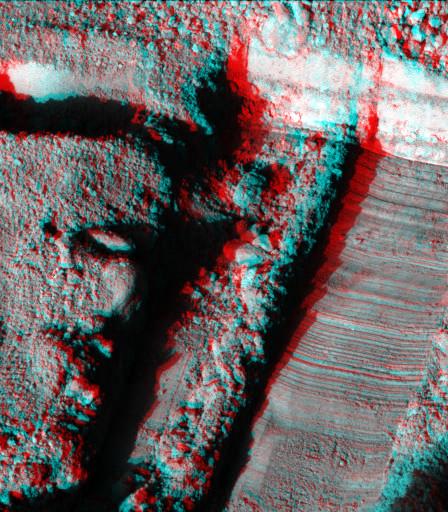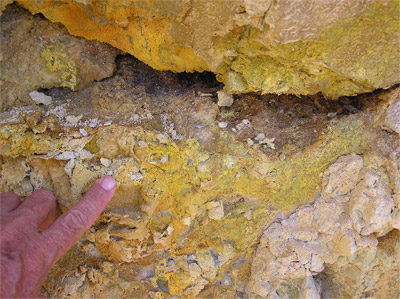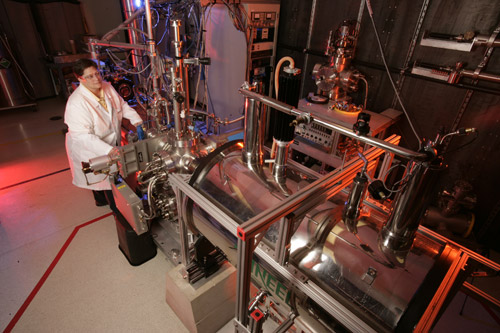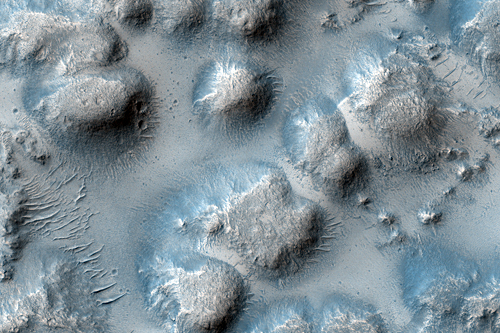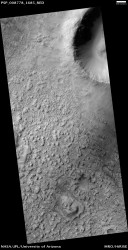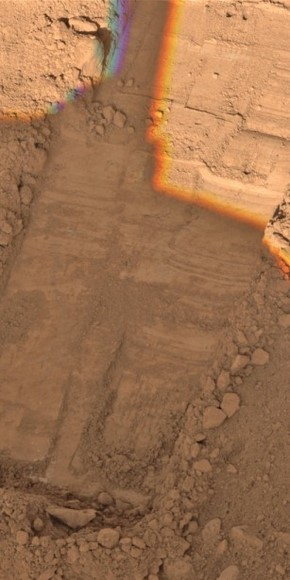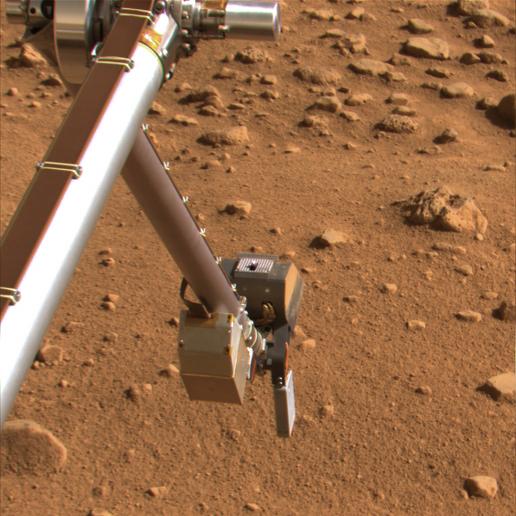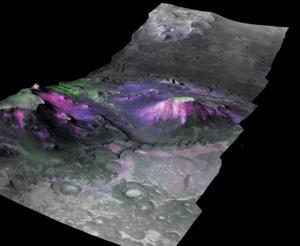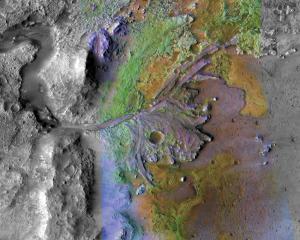[/caption]
NASA’s Phoenix Mars Lander scraped up some icy soil with its robotic arm and scoop and then attempted to quickly deliver the sample to the oven on board. But not enough soil made it to the oven; the icy soil stuck to the scoop. Engineers determined the rasping and scraping activity collected a total of 3 cubic centimeters of icy soil, more than enough to fill the tiny oven cell of the Thermal and Evolved-Gas Analyzer, or TEGA. However, images returned from the lander Saturday showed that much of the soil remained lodged in the robotic arm’s scoop after the delivery attempt. “Very little of the icy sample made it into the oven,†said Barry Goldstein, Phoenix project manager. “We believe that the material that was intended for the targeted cell is the material that adhered to the back of the scoop.â€
Once the sample had been collected, the robotic arm tilted its scoop and ran the rasp motor several times in an attempt to sprinkle the sample into the oven whose doors were wide open. The scoop was then inverted directly over the doors. A screened opening over the oven measures about 10 centimeters (4 inches) long by 3 centimeters (1.5 inches) wide. The oven itself is roughly the size of an ink cartridge in a ballpoint pen.
But TEGA’s sensors didn’t detect enough soil in the oven for the oven doors to close. Commands were also sent to vibrate the screen on TEGA several times. The good news there is that the vibrating did not cause the oven to short circuit, a problem that occurred earlier and engineers have been worried that vibrating could possibly short out the entire instrument. But TEGA lives on for the team to try again to quickly deliver the icy soil to the oven before the ice sublimates away in Mars thin atmosphere. The ice can exist just under Mars surface, protected by the soil.
Goldstein said the team will adjust their sample drop-off strategy and try again.
Original News Source: Phoenix News

